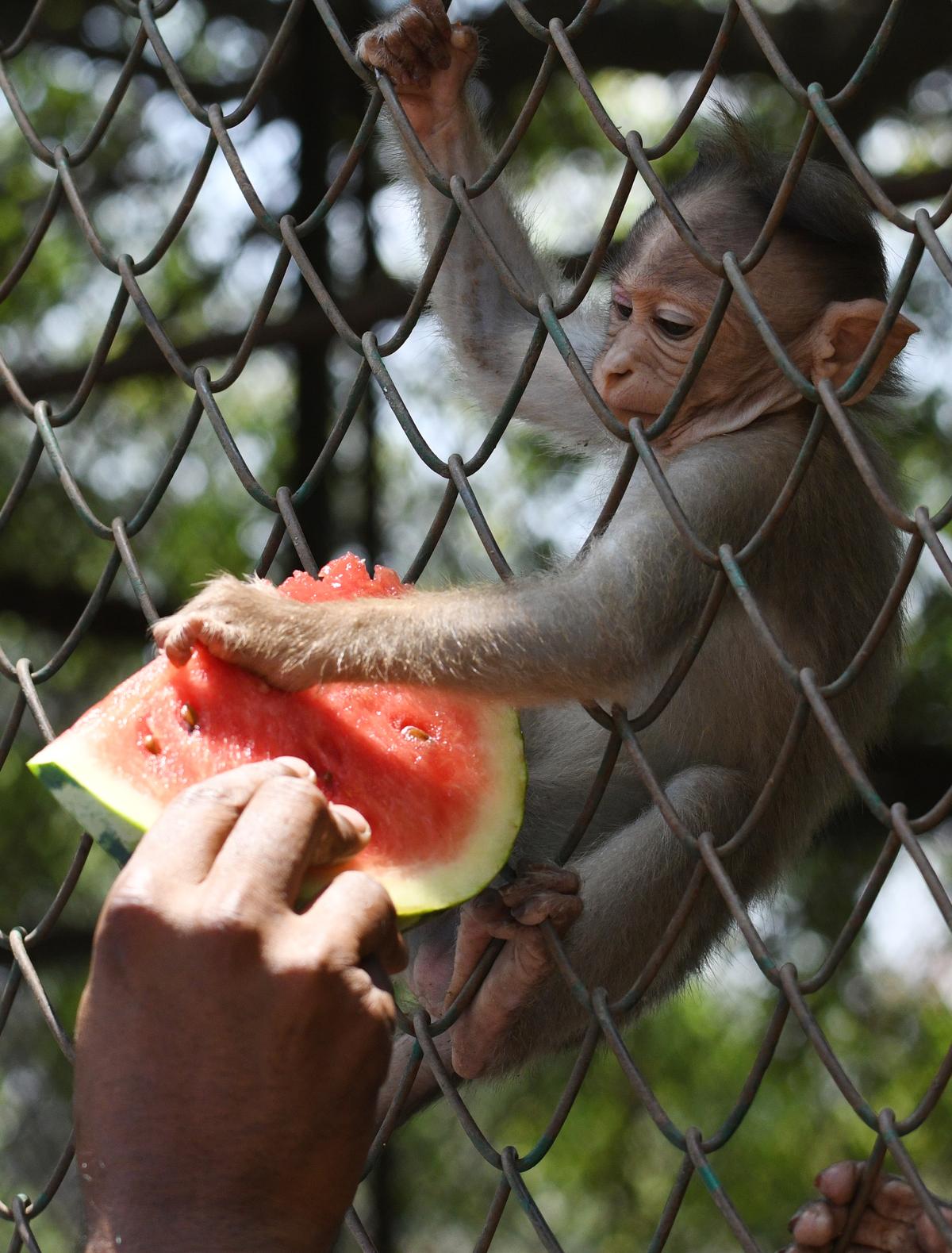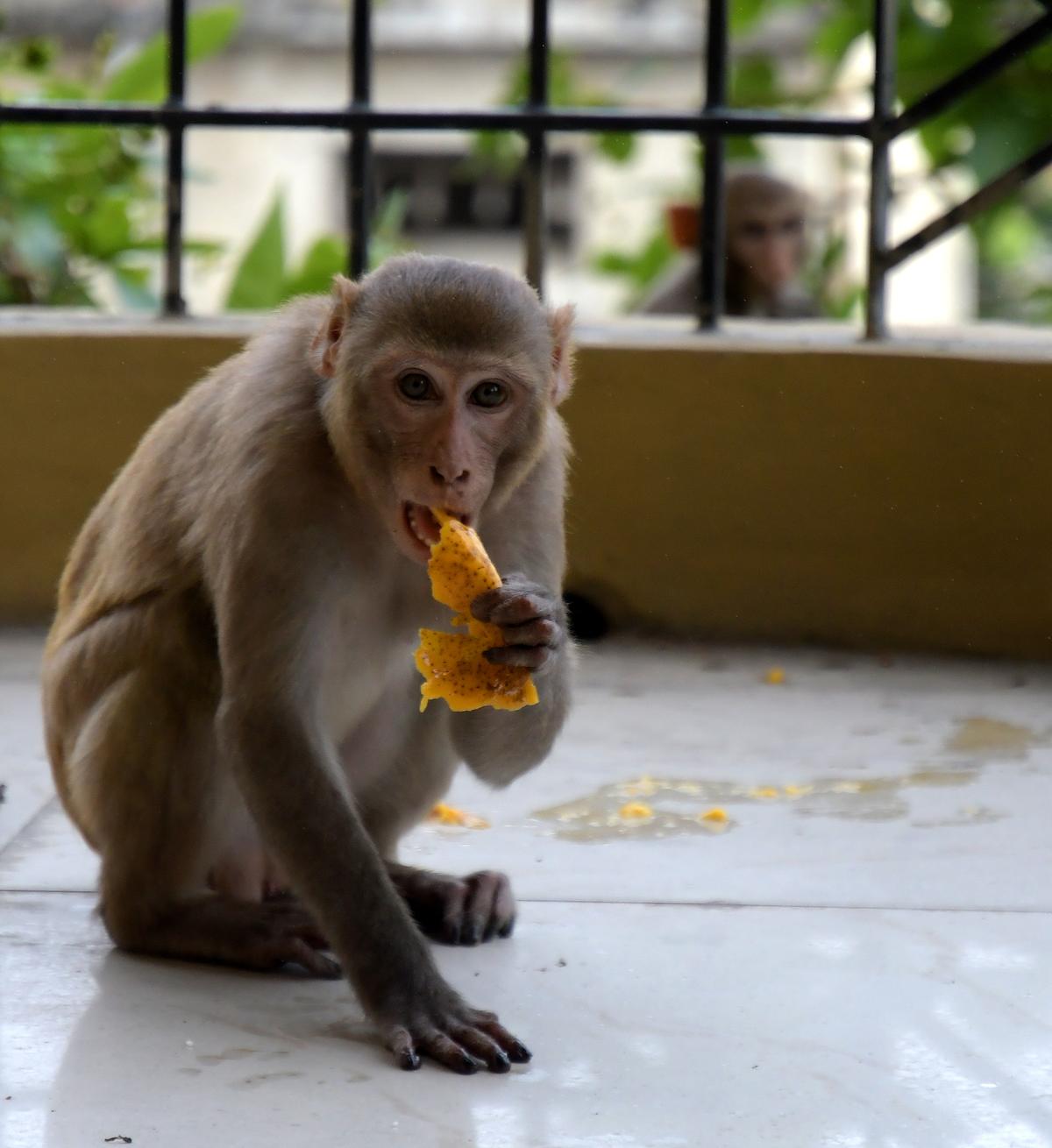When primatologist Anindya Sinha first came to Bengaluru in the early 1990s, he couldn’t help but notice the number of bonnet macaques in the city. “They were not just in Cubbon Park or Lal Bagh, but also on the city walls and the terraces of houses,” he says at a recent talk at Science Gallery, Bengaluru. “But, of course, we knew that times were changing and their existence was doomed,” he says.
Anindya Sinha
| Photo Credit:
SPECIAL ARRANGEMENT
According to Sinha, a professor at the National Institute of Advanced Sciences (NIAS) in Bengaluru, as the city transitioned from the Garden City of yore to the Silicon Valley of India that it is today and lost its gardens as well as the relatively relaxed pace of life that had once defined it, many other non-human inhabitants of the city began to leave. One such “legitimate citizen of the city” was the bonnet macaque, a species of monkey native to peninsular India.
“What subsequently developed was not only negativity about the macaque, but also these other ideas and conceptions that came in, about aesthetics, for example,” he says in this talk titled Changing Ecologies, Transforming Lives: Complex Coexistence of Human and Non-Human Primates in Our Cities. “If Bengaluru was to be a beautiful city, it shouldn’t have monkeys just as it shouldn’t have dogs. I find that personally very difficult to accept because what it is clearly saying is that we are speciesists,” says Sinha, whose lecture offered insights into the profound relationship Indians have shared with nonhuman species, including macaques, why this co-existence is under threat and how these macaques have learnt how to survive in human-altered landscapes, often resorting to pilfering, begging or forging new friendships to adapt to an urbanised world.
“We fight being racists, we fight being sexist. But I don’t think we have any qualms about announcing loudly that only we will stay in the city, not the macaques or dogs.”
A long history of co-existence
The kinship that Indians have traditionally had with non-human species has been an integral aspect of our culture, he says, adding that this aspect of our attitude towards other forms of life still exists in many parts of the country. “I will stick out my neck and say that the closeness that humans feel towards non-humans in India far out-surpasses any other community anywhere in the world,” he says, attributing this to two specific reasons.
“The first is that our philosophy looks at all other species in a continuum with ourselves. This is in marked contrast with the West, where either because of Judeo-Christian faith or generations of philosophers, the human and the non-human were very starkly separated,” he says. The second reason, in his opinion, is religion, with “many of our deities, many of the vehicles of our gods and goddesses being non-human. That gave them pride of place in our communities and belief systems,” he says.
To make his case, he uses the example of the fishing folk of Charotar in Gujarat, who have lived in relative harmony alongside the mugger or marsh crocodile for centuries. “This is a remarkable friendship. There have been very few attacks, about four or five in the last 40 years, with almost no deaths,” says Sinha, showing the audience a photograph taken at Charotar depicting one such friendship — between Ramubhai, a fisherman and Raju, a marsh crocodile. “The relationship is so close that Ramubhai can call out to Raju, and Raju responds to him,” he says.
This attitude, unfortunately, is fast disappearing, says Sinha. “I do not understand why this spirit, this philosophy of being with other beings, does not pervade our modern thinking of other beings,” he says. “Maybe we have lost much of the idyllic kind of world that we imagine where we could co-exist without stress, strain and conflict.”
The macaques who love humans
Macaques are a genus of old-world primates consisting of around 24 species spread across the world, 12 of which are found in India, including the Assam macaque, the Rhesus macaque, the southern pig-tailed macaque, the white-cheeked macaque and the lion-tailed macaque. “They have the largest range of non-human primates, to the extent that there is one species that lives in Northern Africa, but all the other species extend from Afghanistan in the west to Japan in the east,” says Sinha. In his opinion, what is most remarkable about them is that they are flexible in their social and individual ecologies and behaviour. “As a result, they have been extremely successful evolutionarily.”
Of these, there are two species — the North Indian Rhesus macaque and the South Indian bonnet macaque — that are especially interesting because they have a “remarkable ability to adapt to almost any kind of ecology, both natural and human-made.” Additionally, both these species as well as the Nicobar long-tailed macaque, tend to move towards human habitation, says Sinha. “In some sense, crudely speaking, if you give these macaques a choice between living in a forest and living with people, they prefer to live with people,” he says.
According to him, the ability of macaques to adapt to urban dwellings is not new — they have been doing so for centuries. Sinha brings up a poem featuring a monkey on a jackfruit tree who “mistakes for fruit… the eye… on the thronged drumheads,” and explains, “This was originally a poem in Tamil by a poet called Mutamociyar,” he says, pointing out that the poet wrote this poem about 2000 years ago. This indicates that “we have lived with macaques for very long periods of time and have co-evolved with them.”
And yet, the relationship between human beings and macaques is also often fraught with tension, with many early biologists even referring to these macaque species as “weed macaques” since they “are very prolific, they multiply in large numbers and are even called pests, just as weeds are.” Sinha, however, does not see the macaques this way. “In our research group, we decided very consciously to do away with that term because of the kind of value system this term had,” he says. “We call them anthropophilic macaques since they love people, or the prolific macaques since they multiply at very high rates,” he says.

“Once a macaque has tasted human food, her life has changed forever,” says Sinha.
| Photo Credit:
PERIASAMY M
Adaptation in action
One offshoot of this close relationship with human beings is that these interactions irretrievably change the macaques. “Once a macaque has tasted human food, her life has changed forever,” says Sinha, expanding on some of the behaviours that have resulted from this.
In Bandipur National Park, for instance, where tourists have been interacting with these animals by throwing food to them, juvenile bonnet macaques have developed new modalities of communicating with people who carry foods in their hand, he says, showing a photograph of a young monkey with its arm stretched out, almost in a begging gesture. “It consists of four behaviours,” he explains.” These juvenile monkeys end up tracking people who have food in their hands and orient themselves so that they are making eye contact with these people.”
“While they are doing this, they give a coo-coo call, and finally, when eye contact is made with a human, the macaque puts out its hand,” he says. “This is remarkable because they don’t do it with other macaques; they do it only with people. The interesting reason for that is there is no food-sharing amongst these macaques, but people are willing to share food with them. “It is a very human appeal,” says Sinha, adding that this entire set of behaviours is completely newand “never before seen in any wild monkeys.”

“When people provide food to these females, that bond is tested because the competition for the food becomes so high,” says Sinha.
| Photo Credit:
RAJEEV BHATT
Human presence in Bandipur is also gravely impacting the integrity of macaque social groups. Like most primates as well as mammals like elephants, lions and hyenas, macaques are female-bonded, forming very close relationships with others in their group, which typically consists of a few adult males, many females and all their offspring. “When people provide food to these females, that bond is tested because the competition for the food becomes so high,” says Sinha, whose team is now seeing group fission with females often leaving these large multi-male, multi-female groups to bring down social tensions.
“You end up with small groups of females with a single male. In the last three decades, many of the groups in Bandipur and Mudumalai, especially those around the highway, have developed a new form of social organisation — a single adult male and these small groups of females — and they don’t do very well,” he says.
Doomed city dwellers
In his talk, Sinha also discusses how changing ecological circumstances are causing many of these animals to move from forests to highways to villages and cities. “Their forests are being removed, they have no way to go back, and so they adapt to different kinds of human habitations,” says Sinha. Macaques, he adds, have a high degree of what he calls phenotypic flexibility, the “ability to quickly adapt to changing conditions, so you are not left in a difficult situation,” he says.
This phenotypic flexibility makes it easier for them, as compared to many other animals, to adapt to urban ecosystems. For instance, “they may not have their trees, canopies and branches, but they use this mass of electric cables and wires to move across the city,” he says, sharing a video of a macaque stealing a woman’s glasses and refusing to return it unless given food bought from a nearby vendor. “Clearly, this is a barter system, which they have learnt to negotiate,” he says. “And don’t forget that shopkeepers also benefit.”
While macaques may have learnt to adapt to urban spaces, the people who inhabit these same spaces aren’t always happy to have them there. “Across virtually every city, we have gotten into negative relationships with macaques,” he says. The problem, in his opinion, is very complex, affecting both humans and animals. “Where you stand on it will depend on where your empathies lie and how you think the problem can be solved,” he says.
However, it is important to remember that macaques, world-over, are struggling to survive, with research showing that many of them are disappearing from across their traditional distribution ranges, “primarily due to anthropogenic factors and their own maladaptive responses to such influences. Their lives are not becoming easier, and in fact, they are doomed,” says Sinha, who believes that more detailed ecological behavioural studies of wild, urban and semi-urban macaques are essential. “We are in urgent need of management strategies for the species in protected areas with tourist-primate interactions and in urban areas with very severe human-primate conflict,” he says. “Otherwise, there is very little or no hope for the survival of macaques.”
Published – February 25, 2025 09:00 am IST